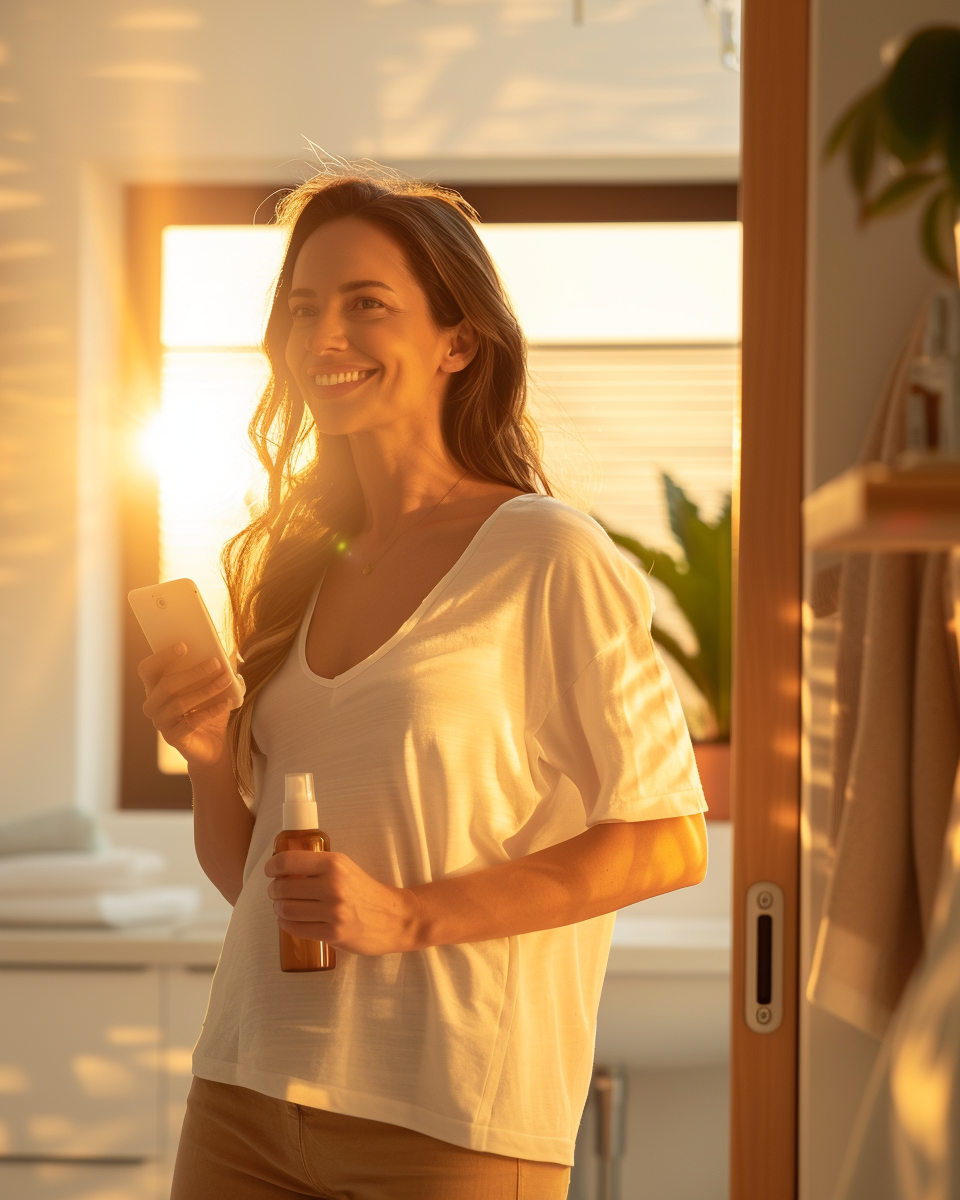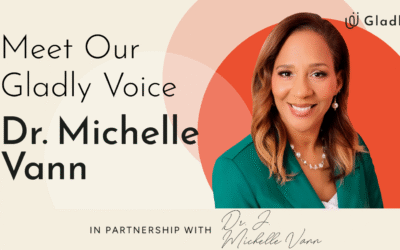Non-toxic skincare shouldn’t feel like a mystery. But with so many products claiming to be “clean,” “natural,” or “gentle,” it’s hard to know what really supports your skin and your values.
At Gladly Shop, we believe the best products do both: they work with your body’s natural rhythms and align with a purpose-driven mission. That’s why we’re spotlighting hypochlorous acid (HOCl), a science-backed ingredient that’s gaining real traction among conscious families and ethical brands.
In this guide, we break down what non-toxic skincare really means, why HOCl stands out, and how a simple, proven 3-step routine can support both your skin and the world around you.
Non-Toxic Skincare:How to Spot the Good Stuff
Ever stood in the skincare aisle feeling overwhelmed by countless “clean” and “natural” claims? That moment of label overload might be your skin’s way of asking for a pause. Taking time for mindful self-care practices can help us tune into what our bodies truly need beneath the marketing noise.
The term “non-toxic skincare” gets tossed around so freely that its meaning has become diluted. At its core, truly non-toxic products work with your body’s natural processes rather than disrupting them. This brings us to hypochlorous acid (HOCl), a remarkable ingredient your immune system already produces naturally. Unlike synthetic compounds that might trigger reactions, HOCl calms inflammation, fights bacteria, and promotes healing while remaining gentle enough for sensitive skin.
Many people in our community have shared similar frustrations: routines that promise clarity but end in redness, anxiety, or a bathroom shelf full of almost-empty jars. That’s why we curate products that support your skin’s natural balance and your values, without the noise.
When Non-Toxic Skincare Feels More Confusing Than Cleansing
Walking through skincare aisles feels like navigating a maze of promises. “Clean,” “natural,” “non-toxic” – these words appear everywhere, yet mean surprisingly little. According to research from IMARC Group, the global skin care products market was valued at USD 166.35 billion in 2024, with consumers increasingly seeking products labeled as natural and organic.
But what happens when marketing outpaces regulation? The result is a label-free-for-all, where “non-toxic” might mean anything, or nothing at all.
Unregulated Buzzwords in Clean Beauty
Here’s something that might surprise you: the term “non-toxic skincare” has no standardized definition in the beauty industry.
The FDA doesn’t require pre-approval for most cosmetic products, which means brands can use terms like “clean,” “natural,” or “non-toxic” without backing them up. That opens the door to a label-free-for-all, where leafy packaging and gentle-sounding names can hide irritating or untested ingredients.
Many consumers assume “clean” means safer, but without transparent standards, these claims remain hollow. The supplement industry offers a helpful parallel: clean-label supplements typically feature short, pronounceable ingredient lists that build consumer trust through clarity rather than vague promises.
Skincare could benefit from similar transparency, where what’s excluded matters as much as what’s included.
Bridging Trust with Verified Certifications
Consumer skepticism grows with every unsubstantiated claim. A study by Drive Research found that 99% of women are willing to invest in quality skincare products, but not all of them find what they’re looking for. That gap between high expectations and disappointing results is why third-party certifications have become essential trust signals.
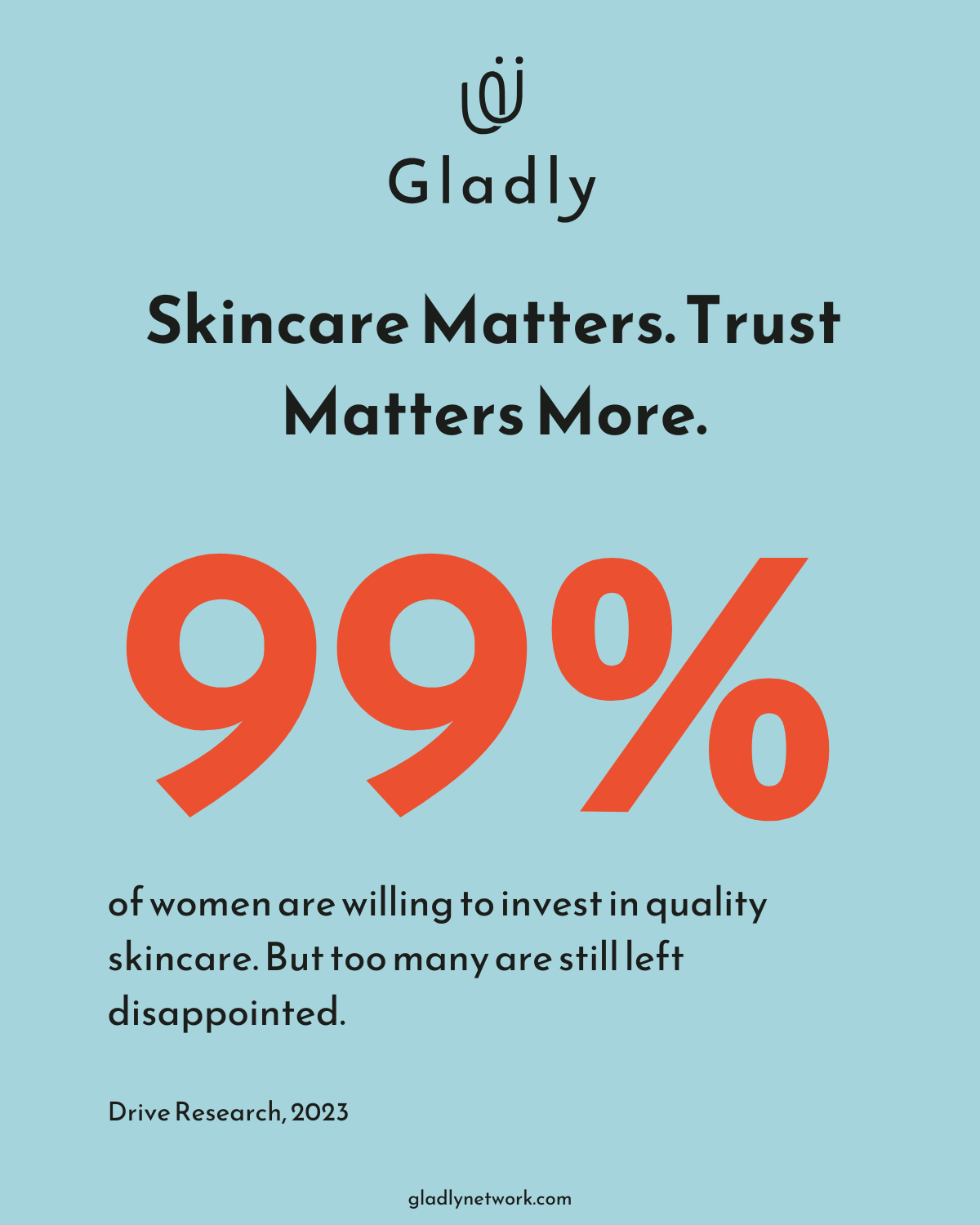
That’s why third-party certifications have become essential trust signals; they offer consumers something more reliable than a pretty label.
Organizations like PETA provide rigorous, transparent verification. Their Beauty Without Bunnies program certifies products through annual audits, ensuring that no animal testing occurs at any stage of production.
Similarly, when shopping for cruelty-free fragrance brands, consumers learn to look beyond pretty packaging for substantiated ethical claims, a practice equally valuable in skincare.
What Actually Makes a Product Safe
Safety in skincare comes from science, not marketing. Truly safe products undergo stability testing, dermatologist review, and include ingredients with established safety profiles. Instead of relying on vague “non-toxic” claims, savvy consumers turn to ingredient lists and trusted resources like the EWG Skin Deep database, which rates over 90,000 personal care products on a hazard scale.
Clinical testing adds another layer of credibility. Products that claim to be “dermatologist-tested” should go a step further and share details about the testing protocols and outcomes.
According to the same Drive Research survey, 74% of respondents have both morning and evening skincare routines. That level of daily use makes it even more important to prioritize genuine safety standards over empty promises.
The Gentle Power of Hypochlorous Acid You Probably Haven’t Tried
Sometimes the most remarkable skincare ingredients come from within our own bodies, not from a laboratory. Hypochlorous acid (HOCl) actually stands as a perfect example of this natural phenomenon. Our immune system naturally produces this molecule to fight infection and heal wounds. In hospitals and medical settings, HOCl has transformed wound care with its unique properties.
What Is HOCl and How It Works
Our white blood cells produce HOCl as a first-line defense against pathogens. When skin encounters harmful microbes, these specialized cells release this powerful compound. Unlike harsh chemicals, HOCl selectively targets bacteria and viruses while preserving our skin’s delicate barrier.
This selectivity stems from HOCl’s unique molecular structure. According to Scientific American, it works rapidly against pathogens yet breaks down into simple salt water afterward. This quick neutralization process explains why it causes minimal irritation compared to other antimicrobials.
For skincare applications, manufacturers recreate this molecule through a fairly simple process. They essentially electrolyze salt water to mimic our body’s natural production method. This approach yields a gentle yet effective ingredient for various skin concerns.
Clinical Evidence Not Hype
The benefits of HOCl extend beyond theory into clinical reality. A randomized controlled trial with 120 participants showed impressive results. HOCl spray reduced acne lesions by 38% over six weeks, with inflammation markers dropping 45% according to biopsy data.
These results pretty much rival traditional acne treatments in effectiveness. However, HOCl achieves this without the dryness and irritation often associated with ingredients like salicylic acid. This makes it particularly valuable for those with sensitive skin conditions.
HOCl also demonstrates remarkable safety profiles in medical settings. A recent study published in the Journal of Men’s Health compared different surgical antiseptics. The researchers found that HOCl resulted in fewer allergic reactions (1 case vs. 4 cases) compared to povidone-iodine. It maintained comparable infection prevention while causing fewer adverse effects.
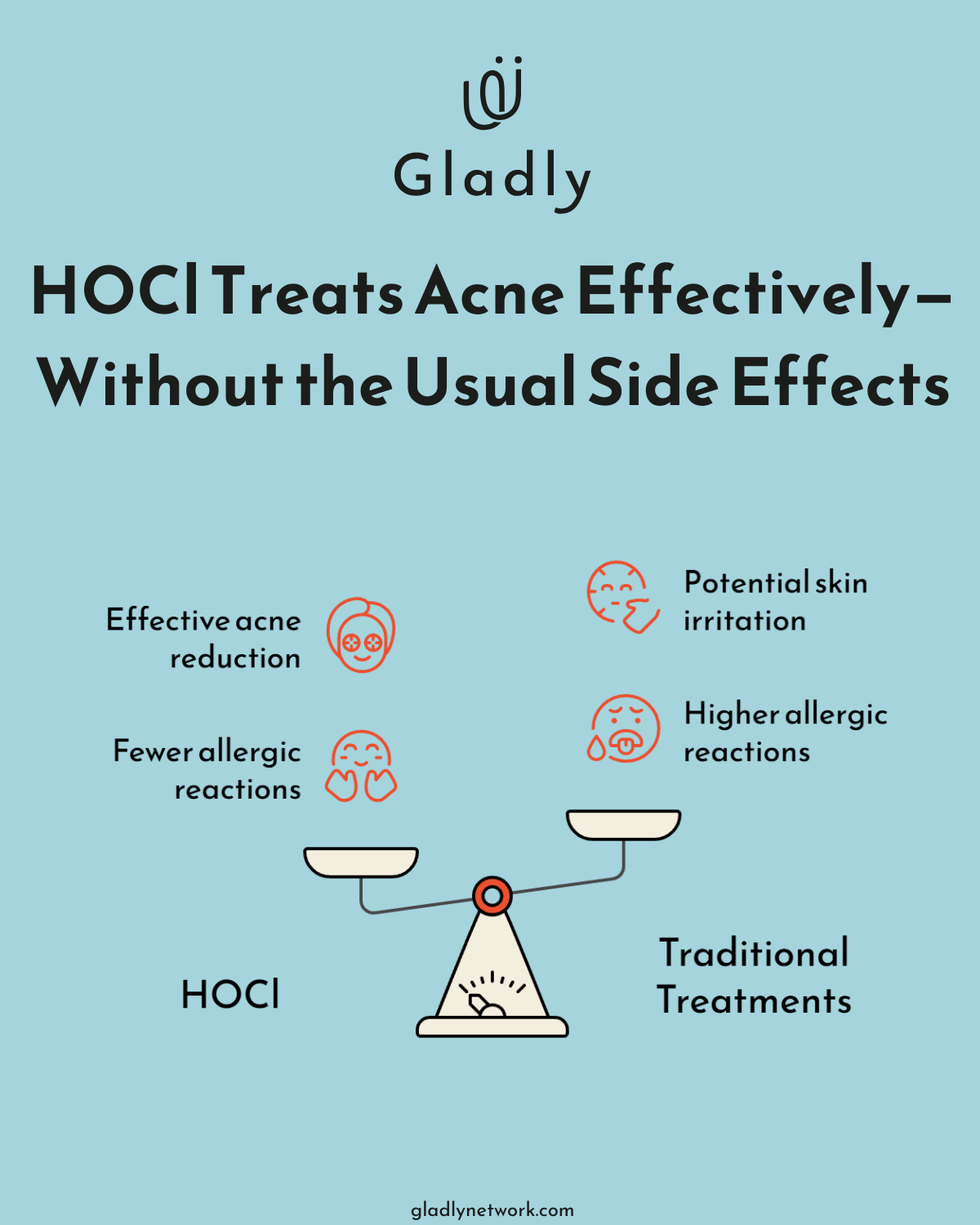
From Combat Zones to Cosmetic Counters
HOCl’s journey to our bathroom shelves began in hospitals and battlefield medicine. Medical professionals have long valued its unique properties in wound care. It effectively cleans wounds without damaging healing tissue – a quality equally beneficial in daily skincare.
The concentration matters significantly in different applications. Skincare formulations typically contain between 0.005% and 0.02% HOCl, which basically balances efficacy with gentleness. This precise formulation allows for daily use without irritation.
This same gentle power makes HOCl valuable beyond personal care products. Many households now use HOCl solutions for healthy home cleaning, appreciating its ability to disinfect without harsh chemicals. In some respects, its versatility extends even further; some communities receive donated HOCl solutions for water purification.
The transition from medical necessity to skincare staple represents a growing trend. We increasingly appreciate ingredients that work with our bodies rather than against them. HOCl sort of exemplifies this shift, powerful enough for hospital use yet gentle enough for daily facial mists.
Real Skin, Real Impact: A Routine That Works and Gives Back
Science matters, but results speak louder. Let’s move beyond the lab view of HOCl. This remarkable ingredient transforms real skin. It also creates ripples of positive change in our world. The beauty of conscious skincare works in two ways: healing your complexion while supporting communities around us.
A Routine Rooted in Science (Not Hype)
If you’re looking for a skincare reset that supports both sensitive skin and conscious values, a simple HOCl-centered routine might be the answer. Here’s how it works.
Where to Find HOCl That Gives Back
If you’re curious about trying HOCl for yourself, The Hypochlorous Company is leading the way with science-backed, USDA-certified organic formulations that are safe, sustainable, and surprisingly powerful. Their proprietary production method extends HOCl’s shelf life without the use of harsh preservatives, making it ideal for both skincare and household use. Beyond product quality, their mission extends globally, and they donate HOCl solutions to underserved communities facing clean water shortages. It’s not just about healing your skin; it’s about supporting a cleaner, healthier world.
The 3-Step Conscious Skincare Routine
This easy, science-backed routine is designed for real results and everyday simplicity:
Step 1: HOCl Mist Cleanser
Start with a gentle mist that purifies without stripping. HOCl works more effectively than traditional cleansers. It’s gentle enough for daily use, ideal for sensitive complexions.
The mist format ensures even application with minimal waste. Many brands now offer refillable bottles that reduce plastic use, so you’re helping the planet too.
Step 2: Barrier-Repair Cream
Follow with a moisturizer designed to strengthen your skin’s natural barrier. For optimal results, pair topical hydration with internal nourishment.
Health experts recommend around 9 cups of water daily for women and 13 for men to maintain skin plumpness. This supports barrier function from within, an inside-out approach to skincare.
Step 3: Lightweight Organic Oil
Seal everything in with a few drops of certified organic facial oil. Options like those from 100% Pure come in refillable glass bottles. They direct 20% of profits toward rainforest conservation.
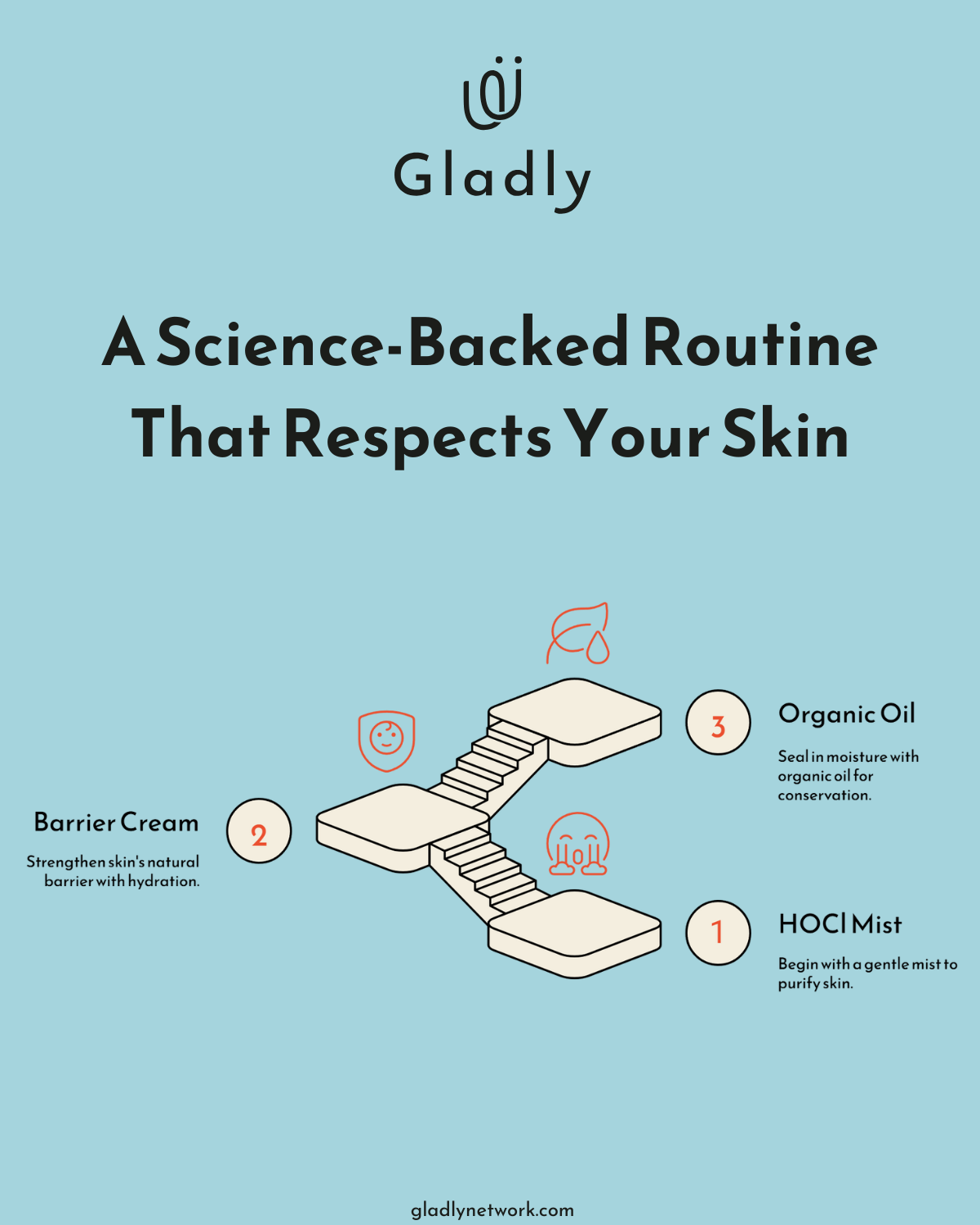
These oils provide nourishment without clogging pores. They create a protective layer that locks in previous products while adding a healthy glow to your complexion.
Skincare That Does More Than Heal
Choosing non-toxic skincare shouldn’t mean paying more or searching alone. At Gladly, we make it easier to find products that respect your skin, your values, and your wallet.
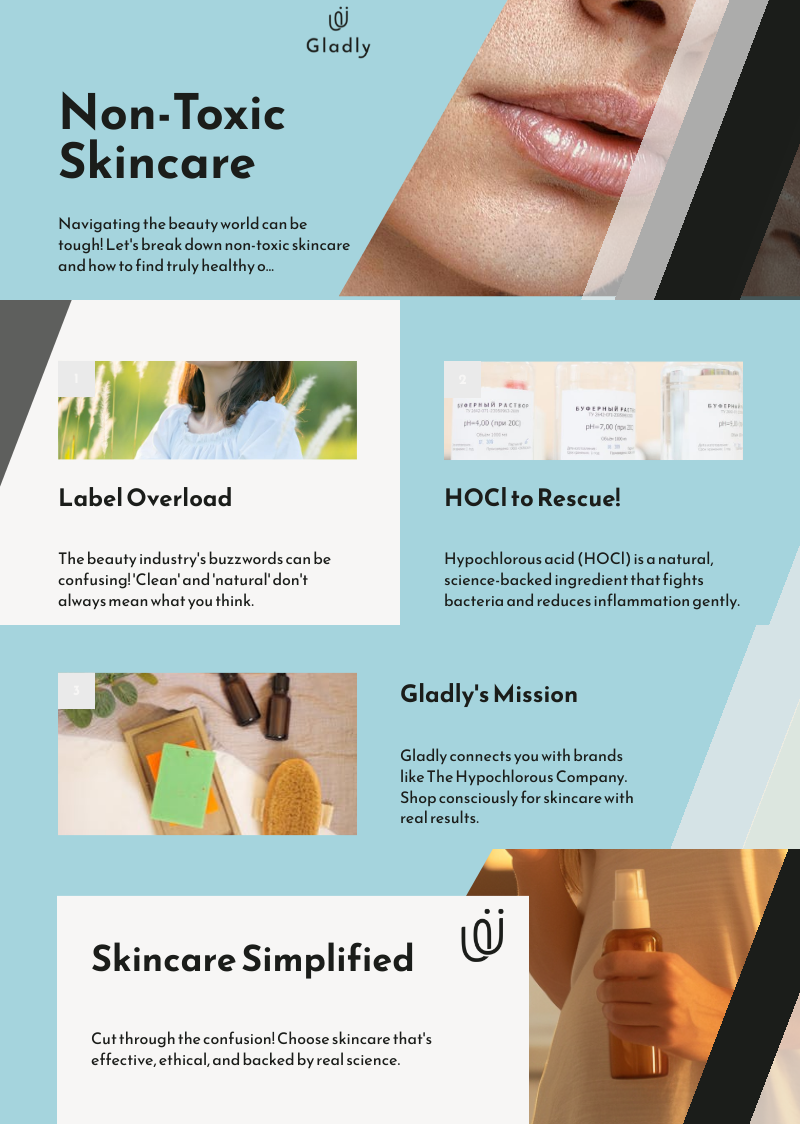
We partner with conscious brands that go beyond clean labels, offering science-backed formulas, sustainable packaging, and genuine commitments to people and the planet. And yes, they come with exclusive discounts you won’t find anywhere else. It’s free to join, and every order helps build a more ethical marketplace.

